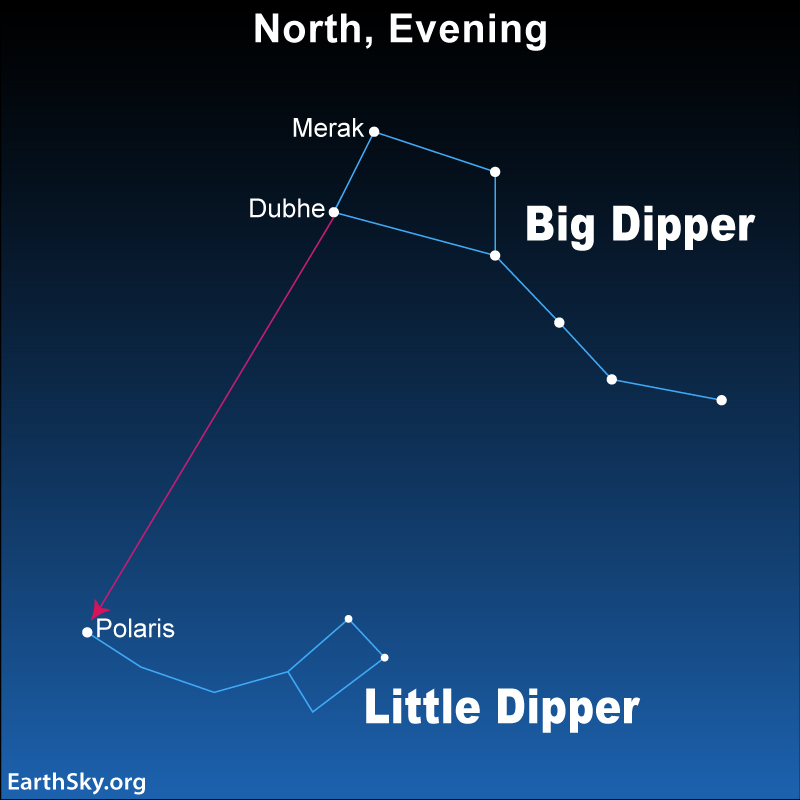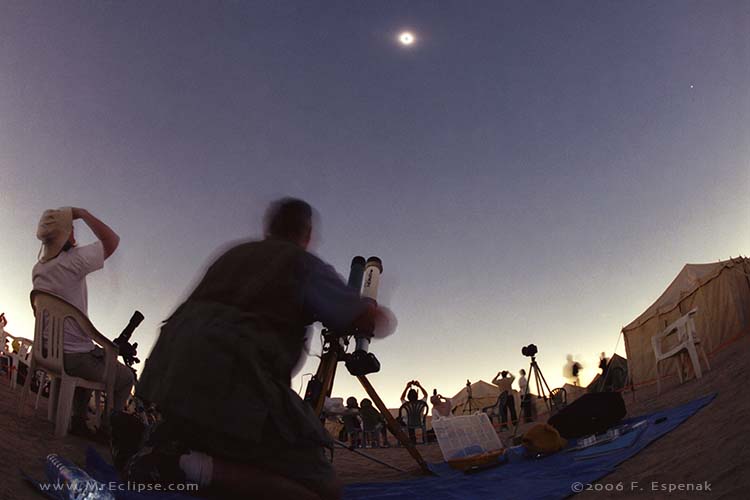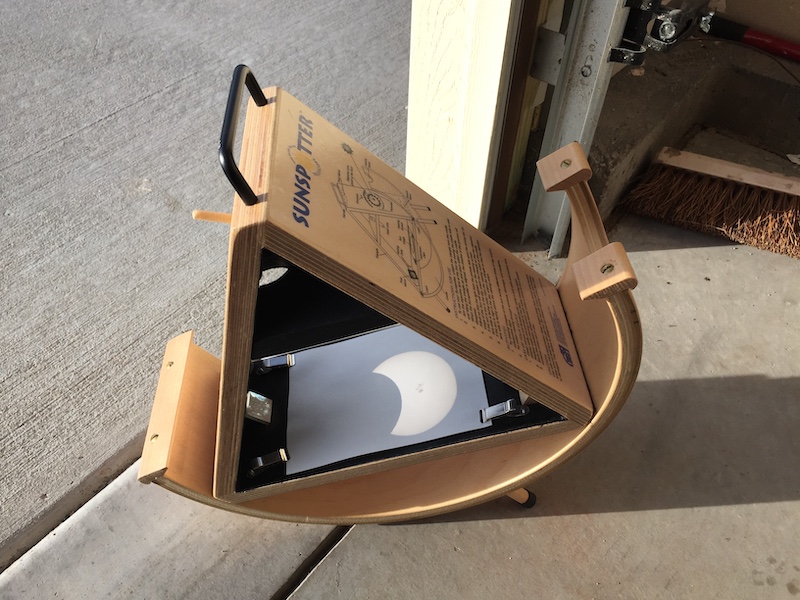
According to the NOAA’s Storm Prediction Center, more than 100 million people in east-central and mid-southern U.S. states face a risk of severe weather today, March 30, 2025. The organization announced yesterday:
A widespread/ substantial severe weather episode is forecast across an area centered on the Ohio/ Mid and Lower Mississippi/ Lower Missouri/ Tennessee River Valleys. Very large hail, damaging winds, and strong tornadoes are expected.
Cities including Indianapolis, Indiana; St. Louis, Missouri; Nashville, Tennessee; and Little Rock, Arkansas, face what the Storm Prediction Center calls an enhanced risk, the third of five risk levels. That means widespread or persistent storms are expected, along with numerous severe storms, which are those capable of producing inch-sized hail (2.5 cm), wind gusts of 58 miles per hour (93 kph) or tornadoes.
This area also faces the possibility of significant severe weather. This is when a storm is capable of producing hail of at least 2 inches (5 cm) in diameter, wind gusts of 75 miles per hour (120 kph), or a tornado that produces damage that ranks at least 2 on the Enhanced Fujita scale.

When will the storms impact you?
Storm timing will vary depending on where you live. The first of two potential waves of thunderstorms is expected early Sunday morning for the western side of the at-risk areas. The line of severe storms could develop as early as late morning or early afternoon, before moving east through the afternoon into the evening. For more specific timing of when storms will impact you, visit the National Weather Service website and enter your location in the top left.

What’s causing the severe weather?
A strong low pressure system with an associated cold front is moving across the middle of the United States. Cold air on its northern side is producing snow and freezing rain for South Dakota, Minnesota and Wisconsin. Meanwhile, on the southern side of the low pressure system, warm, moist air is moving north from the Gulf.
As the low pressure gets stronger, a disturbance in the middle and upper levels of the atmosphere will also move through. This, combined with a strong cold front moving into an area that is warm and muggy with the flow from the Gulf, will cause the severe weather. The storms are expected to develop along the cold front through Sunday afternoon and evening.
Continuing severe weather threat
The severe weather threat from this system will move east. On Monday, much of the U.S. south, Mid-Atlantic and northeast face a slight risk (level two out of five) for severe weather. Warm, moist air remains in place across this area, and a strong cold front will create the chance for severe weather as it progresses east.
Monday’s threat will mainly include damaging wind gusts, but isolated tornadoes are possible across the southern U.S. The weather will then likely remain unsettled, and the Storm Prediction Center has already outlined part of the Ohio Valley for the possibility of severe weather again on Wednesday, April 2nd.

Understanding severe weather outlooks
The Storm Prediction Center uses a five level risk category system when forecasting severe weather. The levels are marginal, slight, enhanced, moderate and high.
If your area is outlined in a marginal risk, expect isolated severe storms that are fairly short lived. A slight risk means severe weather is expected, but not widespread. An enhanced risk, which is what millions face today, means more widespread or longer-lasting severe storms are forecast. A moderate risk means widespread severe weather is likely, with storms that could be long-lived and intense, producing large hail, damaging wind gusts and tornadoes. Finally, a high risk means long-lasting, very intense and widespread damage from severe weather is expected. This would include long-track tornadoes, devastating wind gusts and large hail.

Watches vs. Warnings
During a risk for severe weather, watches and warnings are issued in order to keep people aware of dangerous weather that could impact them. But do you know the difference between a weather watch and a warning?
A watch is issued typically hours in advance of impending weather. It means conditions are right for a particular weather hazard to occur, but not that it’s currently occurring.
A weather warning means that particular weather hazard is expected to occur soon, or is already happening.
So if a tornado watch is issued, this means the weather conditions are right for a tornado to form during a severe thunderstorm. A tornado warning means that a tornado is expected to develop, or has already developed and been spotted. During a tornado watch you should immediately go to your safe space and wait for the threat to pass.

Severe Storm Safety
The safest place during a tornado is in a basement or storm shelter. If you don’t have a basement or storm shelter, locate an interior room or closet in the lowest, most central part of your home, away from all outside windows and walls. If you live in an apartment building or high-rise, go to the very bottom floor of your building and again, find an interior room or closet in the center of the building away from outside walls and windows.
If you’re driving, find the closest building to take shelter in, but do not take shelter under an overpass. An overpass can act as a wind tunnel and make the winds much stronger, and you will be at risk of flying debris.
If you live in a mobile home, get out. A mobile home, even with safety straps, cannot withstand winds from the strongest tornadoes and can easily be blown off its foundations. If your mobile home is in a community and has a community center, go there to take shelter. Otherwise, find a trusted neighbor, family member of friend that has either a basement or a safer place to shelter and stay there until the threat has passed. You can find more severe weather safety tips here.

Bottom Line: Millions of Americans are under the threat for severe weather Sunday and Monday as a strong cold front moves across the middle part of the United States. Damaging wind gusts, large hail and significant tornadoes are all possible.
The post Widespread severe weather expected in east-central US today first appeared on EarthSky.
from EarthSky https://ift.tt/WDpkGqy

According to the NOAA’s Storm Prediction Center, more than 100 million people in east-central and mid-southern U.S. states face a risk of severe weather today, March 30, 2025. The organization announced yesterday:
A widespread/ substantial severe weather episode is forecast across an area centered on the Ohio/ Mid and Lower Mississippi/ Lower Missouri/ Tennessee River Valleys. Very large hail, damaging winds, and strong tornadoes are expected.
Cities including Indianapolis, Indiana; St. Louis, Missouri; Nashville, Tennessee; and Little Rock, Arkansas, face what the Storm Prediction Center calls an enhanced risk, the third of five risk levels. That means widespread or persistent storms are expected, along with numerous severe storms, which are those capable of producing inch-sized hail (2.5 cm), wind gusts of 58 miles per hour (93 kph) or tornadoes.
This area also faces the possibility of significant severe weather. This is when a storm is capable of producing hail of at least 2 inches (5 cm) in diameter, wind gusts of 75 miles per hour (120 kph), or a tornado that produces damage that ranks at least 2 on the Enhanced Fujita scale.

When will the storms impact you?
Storm timing will vary depending on where you live. The first of two potential waves of thunderstorms is expected early Sunday morning for the western side of the at-risk areas. The line of severe storms could develop as early as late morning or early afternoon, before moving east through the afternoon into the evening. For more specific timing of when storms will impact you, visit the National Weather Service website and enter your location in the top left.

What’s causing the severe weather?
A strong low pressure system with an associated cold front is moving across the middle of the United States. Cold air on its northern side is producing snow and freezing rain for South Dakota, Minnesota and Wisconsin. Meanwhile, on the southern side of the low pressure system, warm, moist air is moving north from the Gulf.
As the low pressure gets stronger, a disturbance in the middle and upper levels of the atmosphere will also move through. This, combined with a strong cold front moving into an area that is warm and muggy with the flow from the Gulf, will cause the severe weather. The storms are expected to develop along the cold front through Sunday afternoon and evening.
Continuing severe weather threat
The severe weather threat from this system will move east. On Monday, much of the U.S. south, Mid-Atlantic and northeast face a slight risk (level two out of five) for severe weather. Warm, moist air remains in place across this area, and a strong cold front will create the chance for severe weather as it progresses east.
Monday’s threat will mainly include damaging wind gusts, but isolated tornadoes are possible across the southern U.S. The weather will then likely remain unsettled, and the Storm Prediction Center has already outlined part of the Ohio Valley for the possibility of severe weather again on Wednesday, April 2nd.

Understanding severe weather outlooks
The Storm Prediction Center uses a five level risk category system when forecasting severe weather. The levels are marginal, slight, enhanced, moderate and high.
If your area is outlined in a marginal risk, expect isolated severe storms that are fairly short lived. A slight risk means severe weather is expected, but not widespread. An enhanced risk, which is what millions face today, means more widespread or longer-lasting severe storms are forecast. A moderate risk means widespread severe weather is likely, with storms that could be long-lived and intense, producing large hail, damaging wind gusts and tornadoes. Finally, a high risk means long-lasting, very intense and widespread damage from severe weather is expected. This would include long-track tornadoes, devastating wind gusts and large hail.

Watches vs. Warnings
During a risk for severe weather, watches and warnings are issued in order to keep people aware of dangerous weather that could impact them. But do you know the difference between a weather watch and a warning?
A watch is issued typically hours in advance of impending weather. It means conditions are right for a particular weather hazard to occur, but not that it’s currently occurring.
A weather warning means that particular weather hazard is expected to occur soon, or is already happening.
So if a tornado watch is issued, this means the weather conditions are right for a tornado to form during a severe thunderstorm. A tornado warning means that a tornado is expected to develop, or has already developed and been spotted. During a tornado watch you should immediately go to your safe space and wait for the threat to pass.

Severe Storm Safety
The safest place during a tornado is in a basement or storm shelter. If you don’t have a basement or storm shelter, locate an interior room or closet in the lowest, most central part of your home, away from all outside windows and walls. If you live in an apartment building or high-rise, go to the very bottom floor of your building and again, find an interior room or closet in the center of the building away from outside walls and windows.
If you’re driving, find the closest building to take shelter in, but do not take shelter under an overpass. An overpass can act as a wind tunnel and make the winds much stronger, and you will be at risk of flying debris.
If you live in a mobile home, get out. A mobile home, even with safety straps, cannot withstand winds from the strongest tornadoes and can easily be blown off its foundations. If your mobile home is in a community and has a community center, go there to take shelter. Otherwise, find a trusted neighbor, family member of friend that has either a basement or a safer place to shelter and stay there until the threat has passed. You can find more severe weather safety tips here.

Bottom Line: Millions of Americans are under the threat for severe weather Sunday and Monday as a strong cold front moves across the middle part of the United States. Damaging wind gusts, large hail and significant tornadoes are all possible.
The post Widespread severe weather expected in east-central US today first appeared on EarthSky.
from EarthSky https://ift.tt/WDpkGqy























